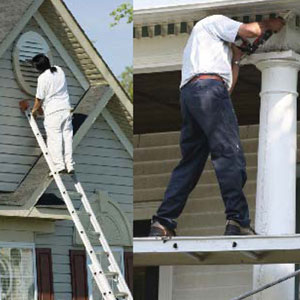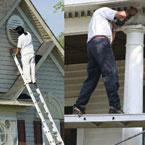 WASHINGTON - The U.S. Senate again looks to reform the EPA’s Lead Renovation, Repair and Painting (LRRP) Rule with the reintroduction of the Lead Exposure Reduction Amendments Act of 2013.
WASHINGTON - The U.S. Senate again looks to reform the EPA’s Lead Renovation, Repair and Painting (LRRP) Rule with the reintroduction of the Lead Exposure Reduction Amendments Act of 2013.
Introduced March 6 by Sen. James Inhofe (R-OK) and six co-sponsors, S.484 would: “Restore the ‘opt-out provision’ which would allow homeowners without small children or pregnant women residing in them to decide whether to require LRRP; suspend the LRRP for homes without small children or pregnant women residing in them, if EPA cannot approve one or more commercially available test kits that meet the regulation's requirements; prohibit EPA from expanding the LRRP to commercial and public buildings until EPA conducts a study demonstrating the need for such an action; provide a de minimus exemption for first-time paperwork violations and provides for an exemption for renovations after a natural disaster; and eliminate the requirement that recertification training be ‘hands on,’ preventing remodelers having to travel to training facilities out of their region.”
In a statement, Sen. Inhofe said, “I am pleased to reintroduce this important bill that reduces the regulatory burdens placed on homebuilders and remodelers by the EPA. It is important that we take appropriate actions to protect vulnerable populations from the harmful effects of lead exposure, but it is imperative that these regulations are not unnecessarily burdensome and costly.
“Currently, the EPA requires contractors to follow extensive safety practices in a one-size fits all approach. Even if the home does not have lead paint or there is not an individual of the at-risk population residing in the home, contractors are required by the EPA to follow the LRRP safety measures which in turn dramatically increase the costs of renovation work. My bill would allow homeowners to opt out of the rule if the home does not place those in the at-risk population in direct harm of lead exposure. It would also require the EPA to develop working test kits to ensure that contractors have the ability to determine whether lead paint actually exists in project homes,” Sen. Inhofe stated.
The EPA’s LRRP Rule has been under debate since taking effect in 2010. Currently, renovation work that disturbs more than 6 square feet on the interior of a pre-1978 home and all window and door replacement must adhere to set work practices, which are supervised by an EPA-certified renovator and performed by an EPA-certified renovation firm. In addition, LRRP’s detractors say that when EPA removed the “opt-out provision” in July 2010, it “more than doubled the number of homes subject to the LRRP Rule,” adding more than $336 million per year in compliance costs.
S.484 has received support from industry associations including the Window and Door Manufacturers Association (WDMA) and the National Lumber and Building Material Distributors Association (NLBMDA).
"Since the EPA Lead Rule took effect in April 2010, EPA has expanded the rule beyond its original goal of protecting pregnant women and small children while mismanaging the implementation of the rule and failing to meet its own requirements to produce an accurate test kit," WDMA President Michael O'Brien said in a statement. "The window and door retrofit market has been key to sustaining the industry and preserving jobs as housing slowly recovers from a prolonged downturn. EPA's effort to expand the Lead Rule beyond its original scope, inaccurate test kits and enforcement actions targeted mainly at certified renovators has only hindered industry recovery efforts," he added.
In a separate statement, NLBMDA Chairman Chuck Bankston said, "Over the last several years of the housing industry downturn, the remodeling and retrofit market has been a key source of business for LBM dealers, either through their installed sales operations, serving remodelers, or both. While we support the goal of protecting pregnant women and small children from lead hazards, EPA's effort to expand the Lead Rule beyond its original intent, its aggressive pursuit of paperwork violations, and its failure to approve a lead test kit meeting its own rule has been an extreme burden on a residential market that is just starting to recover from the recession. We commend Sen. Inhofe for his continuing leadership on this issue and will make the legislation a focus of our upcoming Legislative Conference in Washington."
Co-sponsoring S.484 with Sen. Inhofe are: Sen. Roy Blunt (R-MO), Sen. Tom Coburn (R-OK), Sen. Michael Enzi (R-WY), Sen. Deb Fischer (R-NE), Sen. Chuck Grassley (R-IA) and Sen. David Vitter (R-LA). The Lead Exposure Reduction Amendments Act of 2013 has been referred to the Committee on Environment and Public Works.






Have something to say? Share your thoughts with us in the comments below.